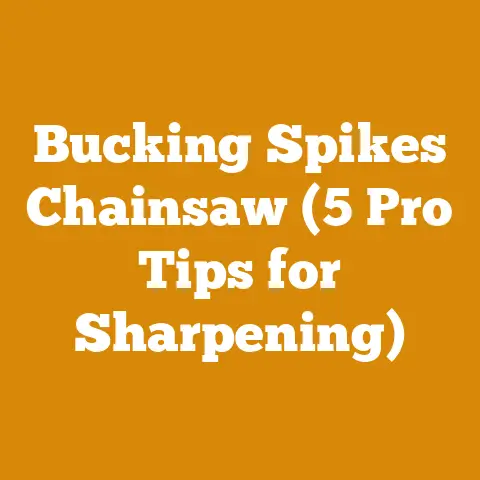Removing Bushes Fast (3 Pro Tips for Clean Wood Processing)
Bringing up layering in the context of bush removal and clean wood processing might seem a bit out of left field at first glance. However, think of your project like an onion – it has layers. There’s the initial layer of dense foliage, the interwoven root systems, and finally, the underlying soil that needs to be prepared for whatever comes next. Just like you wouldn’t peel an onion all at once, tackling a bush removal project effectively requires a layered approach. This article will delve into three pro tips to help you remove bushes quickly and efficiently, leaving you with a clean slate for your wood processing endeavors. I will also weave in the financial aspects, offering insights on budgeting and cost management, drawing from both personal experiences and industry data.
Removing Bushes Fast (3 Pro Tips for Clean Wood Processing)
Removing bushes isn’t just about brute force; it’s about strategy. A well-executed bush removal process sets the stage for efficient wood processing, whether you’re preparing firewood, clearing land for logging, or landscaping. These three pro tips, coupled with a keen understanding of the associated costs, will help you achieve clean and effective results.
1. The Right Tools for the Right Job: Chainsaw, Brush Cutter, and Beyond
Choosing the correct tools is the cornerstone of efficient bush removal. While a chainsaw might be your go-to for larger branches and trunks, it’s often overkill (and potentially dangerous) for smaller bushes and dense undergrowth. Here’s a breakdown of essential tools and their applications:
- Chainsaw: Ideal for cutting thick trunks and branches. Choose a chainsaw with the appropriate bar length for the size of the bushes you’re tackling. Consider an electric chainsaw for smaller jobs to minimize noise and emissions.
- Brush Cutter (Brush Saw): A versatile tool for clearing dense vegetation, small trees, and bushes. Look for models with interchangeable blades for different cutting tasks.
- Loppers: Great for cutting smaller branches and stems that are too thick for pruners but don’t warrant a chainsaw.
- Pruning Shears (Hand Pruners): Perfect for trimming smaller branches and shaping bushes before removal.
- Shovels and Mattocks: Essential for digging around the base of the bush to expose the roots. A mattock provides extra leverage for stubborn roots.
- Root Saw: A specialized saw designed for cutting through roots underground.
- Leverage Bar (Pry Bar): Useful for prying up roots after they’ve been cut.
- Gloves, Eye Protection, and Hearing Protection: Non-negotiable safety equipment.
Cost Considerations:
I’ve learned over the years that skimping on tools is a false economy. Renting can be a viable option for occasional use, but for frequent bush removal, owning your own equipment is often more cost-effective in the long run.
- Chainsaw: Prices range from $150 for a basic electric model to $1,000+ for a professional-grade gas-powered chainsaw.
- Brush Cutter: Expect to pay between $200 and $800, depending on the power and features.
- Loppers & Pruners: High-quality loppers can cost $50-$100, while good pruning shears range from $30-$70.
- Shovels and Mattocks: These are relatively inexpensive, typically costing $20-$50 each.
- Root Saw: Prices vary widely, from $30 for a basic manual saw to several hundred dollars for a powered root saw.
- Leverage Bar: $30 – $60
- Rental Costs: Chainsaws typically rent for $30-$75 per day, while brush cutters can cost $40-$90 per day.
Data Point: According to a survey by the Equipment Rental Association (ERA), equipment rental rates have increased by an average of 3-5% annually over the past five years, driven by inflation and supply chain disruptions.
Cost Optimization Tips:
- Buy used equipment: Check online marketplaces and local classifieds for used tools in good condition.
- Maintain your tools: Regular cleaning, sharpening, and lubrication will extend the life of your equipment and prevent costly repairs.
- Rent less frequently used tools: For example, if you only need a root saw once or twice a year, renting is likely more economical than buying.
Personal Story: I once tried to remove a stubborn patch of bushes using only a chainsaw. It was a messy, inefficient, and frankly, dangerous experience. I quickly realized the importance of having the right tools for the job. Investing in a good brush cutter and a root saw saved me time, effort, and potential injury.
2. The Art of Strategic Cutting: Top-Down and Root-Up
Once you have the right tools, the next step is to develop a strategic cutting plan. The most effective approach is to work from the top down and then from the root up.
- Top-Down Cutting: Start by trimming the branches and foliage from the top of the bush. This will make it easier to access the trunk and roots. Use loppers or pruning shears for smaller branches and a chainsaw or brush cutter for thicker branches.
- Trunk Removal: Once the branches are cleared, cut the trunk as close to the ground as possible. Use a chainsaw for larger trunks and a brush cutter for smaller ones.
- Root Excavation: This is often the most challenging part of the process. Use a shovel and mattock to dig around the base of the bush, exposing the roots. Cut the roots with a root saw or loppers, working your way around the perimeter of the root ball.
- Leverage and Removal: Once the roots are cut, use a leverage bar to pry the root ball out of the ground. You may need to cut additional roots as you lift the root ball.
Cost Considerations:
The time required for bush removal directly impacts labor costs, whether you’re doing it yourself or hiring a professional. Strategic cutting minimizes the time spent on each bush, reducing overall costs.
- Labor Costs (DIY): Even if you’re doing the work yourself, factor in the value of your time. How much is your time worth per hour? This helps you assess whether the project is truly cost-effective compared to hiring someone.
- Labor Costs (Professional): Landscaping companies typically charge $50-$100 per hour for bush removal services. The total cost will depend on the size and number of bushes, as well as the complexity of the root systems.
- Disposal Costs: You’ll need to dispose of the removed bushes and roots. This may involve hauling them to a landfill or composting them. Landfill fees vary widely, but expect to pay $50-$100 per ton.
Data Point: According to HomeAdvisor, the average cost of tree and shrub removal ranges from $200 to $700, with larger, more established plants costing significantly more.
Cost Optimization Tips:
- Plan your project: Before you start cutting, assess the size and number of bushes you need to remove. This will help you estimate the time and resources required.
- Work efficiently: Use the right tools and techniques to minimize the time spent on each bush.
- Consider composting: Composting the removed bushes and roots can reduce disposal costs and provide valuable compost for your garden.
- Get multiple quotes: If you’re hiring a professional, get quotes from several landscaping companies to ensure you’re getting a fair price.
Personal Story: I once underestimated the difficulty of removing a large rhododendron bush. I spent hours hacking away at the branches and roots, only to realize that I was making very little progress. I finally decided to hire a professional, who removed the bush in less than an hour using specialized equipment. Lesson learned: sometimes it’s worth paying for expertise.
3. Root Removal and Soil Preparation: The Clean Finish
Removing the bush is only half the battle. To ensure a clean finish and prepare the soil for future use, you need to address the remaining roots and soil compaction.
- Root Removal: After removing the main root ball, carefully inspect the area for any remaining roots. Use a shovel and mattock to dig up and remove any roots that are larger than your thumb.
- Soil Preparation: The soil around the removed bush is likely to be compacted. Use a garden fork or tiller to loosen the soil and improve drainage.
- Amend the Soil: Add compost or other organic matter to the soil to improve its fertility and structure.
- Filling the Hole: Fill the hole with topsoil or a soil mixture suitable for your intended use (e.g., planting grass, flowers, or trees).
Cost Considerations:
Soil preparation and amendment can add to the overall cost of bush removal, but it’s a worthwhile investment that will pay off in the long run.
- Topsoil: Topsoil typically costs $20-$50 per cubic yard.
- Compost: Compost costs $30-$60 per cubic yard.
- Tiller Rental: Renting a tiller can cost $40-$80 per day.
Data Point: According to the USDA, healthy soil can increase crop yields by up to 20%. While this data refers to agricultural crops, the principle applies to any type of planting. Healthy soil leads to healthier plants.
Cost Optimization Tips:
- Make your own compost: Composting kitchen scraps and yard waste can significantly reduce your compost costs.
- Use local resources: Check with local landscaping companies or nurseries for bulk discounts on topsoil and compost.
- Improve soil drainage naturally: Adding organic matter to the soil will improve drainage and reduce the need for expensive drainage systems.
Personal Story: I once neglected to properly prepare the soil after removing a bush. The area remained compacted and infertile, and I struggled to grow anything in that spot for years. I eventually had to spend a significant amount of time and money amending the soil to make it suitable for planting.
Budgeting for Bush Removal: A Detailed Breakdown
Now that we’ve covered the pro tips for fast and clean bush removal, let’s dive into the nitty-gritty of budgeting. I’ll share a detailed breakdown of the cost components, along with practical tips for cost management.
Cost Components: A Layered Approach
Just like the layering of the project itself, the costs can be broken down into different layers:
- Tool Costs: As discussed earlier, this includes the cost of purchasing or renting chainsaws, brush cutters, loppers, shovels, and other essential tools.
- Labor Costs: This includes the cost of your own time (if you’re doing it yourself) or the cost of hiring a professional landscaping company.
- Disposal Costs: This includes the cost of hauling the removed bushes and roots to a landfill or composting facility.
- Soil Preparation Costs: This includes the cost of topsoil, compost, and tiller rental.
- Permit Costs: In some areas, you may need a permit to remove trees or bushes, especially if they are located on public property or if they are protected species.
Sample Budget: Small Bush Removal Project
Let’s consider a scenario where you need to remove three small bushes (approximately 3 feet in diameter) from your backyard. You plan to do the work yourself.
| Item | Cost | Notes |
|---|---|---|
| Tool Rental (Brush Cutter) | $50 | Assuming you don’t own a brush cutter and need to rent one for the day. |
| Loppers & Pruners | $0 | Assuming you already own these tools. |
| Shovel & Mattock | $0 | Assuming you already own these tools. |
| Disposal Fee (Landfill) | $20 | Assuming a small load and a landfill fee of $50 per ton. |
| Topsoil | $30 | Assuming you need 1/2 cubic yard of topsoil at $60 per cubic yard. |
| Compost | $20 | Assuming you need 1/2 cubic yard of compost at $40 per cubic yard. |
| Total Estimated Cost | $120 | This does not include the value of your time. |
Sample Budget: Large Bush Removal Project (Professional)
Now let’s consider a scenario where you need to remove a large, established bush (approximately 10 feet in diameter) from your front yard. You decide to hire a professional landscaping company.
| Item | Cost | Notes |
|---|---|---|
| Labor (Landscaping Company) | $400 | Assuming a labor rate of $80 per hour and 5 hours of work. |
| Disposal Fee (Landfill) | $50 | Assuming a larger load and a landfill fee of $50 per ton. |
| Topsoil | $50 | Assuming you need 1 cubic yard of topsoil at $50 per cubic yard. |
| Compost | $40 | Assuming you need 1 cubic yard of compost at $40 per cubic yard. |
| Total Estimated Cost | $540 | This includes all labor, disposal, and material costs. |
Variable Factors Affecting Project Costs
It’s crucial to acknowledge that the costs outlined above are just estimates. Several factors can significantly impact the actual cost of your bush removal project:
- Size and Number of Bushes: The larger and more numerous the bushes, the more time and resources will be required.
- Type of Bush: Some bushes have more extensive root systems than others, making them more difficult and costly to remove.
- Accessibility: If the bushes are located in a difficult-to-reach area, such as a steep slope or behind a fence, the removal process will be more challenging and costly.
- Location: Labor and disposal costs vary widely depending on your geographic location.
- Seasonality: Demand for landscaping services may be higher during certain times of the year, which can affect labor costs.
- Permits: The need for permits can add to the overall cost.
Cost Optimization Strategies: A Global Perspective
Here are some practical tips for cost optimization, drawing from experiences and data from various regions:
- DIY vs. Professional: Carefully weigh the pros and cons of doing the work yourself versus hiring a professional. Consider your skills, time constraints, and the complexity of the project.
- Get Multiple Quotes: If you decide to hire a professional, get quotes from several landscaping companies to ensure you’re getting a fair price. Don’t be afraid to negotiate.
- Rent vs. Buy: For tools that you only need occasionally, renting is likely more cost-effective than buying.
- Compost: Composting the removed bushes and roots can significantly reduce disposal costs.
- Bulk Purchases: Buy topsoil and compost in bulk to save money.
- Timing: Consider scheduling your bush removal project during the off-season (e.g., late fall or early winter) when demand for landscaping services is lower.
- Community Resources: Check with local community gardens or landscaping organizations for resources and advice.
- Wood Utilization: If the bushes are large enough, consider using the wood for firewood or other projects. This can offset some of the removal costs.
- Government Programs: In some regions, there may be government programs that offer financial assistance for land clearing or vegetation management.
Data Point: A study by the University of California Cooperative Extension found that homeowners who compost their yard waste can save an average of $100-$200 per year on disposal fees.
Personal Story: When I was clearing land for a firewood operation, I discovered that a local sawmill was willing to take the larger logs for free. This not only saved me disposal costs but also provided them with valuable raw material. It’s always worth exploring potential partnerships and resource-sharing opportunities.
Understanding Timber Prices and Fuelwood Market Rates
To truly understand the financial implications of bush removal in the context of wood processing, it’s essential to have a grasp of timber prices and fuelwood market rates. These factors can influence your decisions about how to utilize the removed bushes and whether to pursue further wood processing activities.
Timber Prices: A Global Overview
Timber prices vary widely depending on the species, quality, and location. Here’s a general overview of timber prices in different regions:
- North America: Prices for hardwood lumber (e.g., oak, maple, cherry) typically range from $500 to $1,500 per thousand board feet (MBF). Softwood lumber (e.g., pine, fir, spruce) typically ranges from $300 to $800 per MBF.
- Europe: Timber prices are generally higher in Europe than in North America, due to stricter environmental regulations and higher demand. Prices for hardwood lumber can range from €800 to €2,000 per MBF, while softwood lumber can range from €500 to €1,200 per MBF.
- Asia: Timber prices vary widely depending on the region. In China, demand for timber is high, driving up prices. In Southeast Asia, illegal logging and deforestation are major concerns, which can affect timber prices and availability.
- South America: Timber prices in South America are generally lower than in North America and Europe, due to abundant forest resources. However, illegal logging and deforestation are also major concerns in this region.
Data Point: According to the FAO, global timber prices have been increasing steadily over the past decade, driven by growing demand and declining forest resources.
Fuelwood Market Rates: A Regional Perspective
Fuelwood (firewood) market rates also vary widely depending on the region, the species of wood, and the dryness of the wood. Here’s a general overview:
- North America: The average price per cord of firewood ranges from $150 to $400, depending on the region and the type of wood. Hardwoods like oak and maple typically command higher prices than softwoods like pine and fir.
- Europe: Firewood prices in Europe are generally higher than in North America, due to higher demand and stricter environmental regulations. Prices can range from €200 to €500 per cord.
- Asia: Firewood is a major source of energy in many parts of Asia, particularly in rural areas. Prices vary widely depending on the region and the availability of wood.
- Africa: Firewood is the primary source of energy for many households in Africa. Deforestation and fuelwood scarcity are major challenges in this region.
Data Point: According to the EIA, the average price of residential firewood in the United States has increased by an average of 5% per year over the past five years.
Utilizing Removed Bushes: Firewood, Mulch, or Compost?
After removing the bushes, you have several options for utilizing the wood and organic matter:
- Firewood: If the bushes are large enough and the wood is suitable for burning, you can cut and split it into firewood. This can be a cost-effective way to heat your home or sell firewood to others.
- Mulch: The branches and foliage can be chipped or shredded into mulch. Mulch is a valuable soil amendment that helps to retain moisture, suppress weeds, and improve soil fertility.
- Compost: As mentioned earlier, the removed bushes and roots can be composted. Compost is a nutrient-rich soil amendment that can improve soil structure and fertility.
- Wood Chips for Paths: If you have a chipper, you can create wood chips and use them to create pathways or ground cover.
Cost-Benefit Analysis:
Before deciding how to utilize the removed bushes, it’s important to conduct a cost-benefit analysis. Consider the following factors:
- The size and species of the bushes: Are they large enough to be used for firewood? Are they a species that burns well?
- The availability of equipment: Do you have a chainsaw, wood splitter, or chipper? If not, will you need to rent or purchase them?
- The time and effort required: How much time will it take to process the wood into firewood, mulch, or compost?
- The potential value of the end product: How much can you sell the firewood for? How much will you save on mulch or compost if you make it yourself?
Personal Story: I once spent a significant amount of time and effort processing a pile of brush into firewood, only to discover that the wood was a species that burned poorly and produced very little heat. I learned that it’s important to do your research and choose the right species of wood for firewood.
Drying Time and Moisture Content: The Science of Firewood
If you plan to use the removed bushes for firewood, it’s crucial to understand the science of drying time and moisture content. Properly seasoned firewood burns more efficiently and produces more heat.
Moisture Content: The Key to Efficient Burning
Moisture content refers to the amount of water in the wood. Freshly cut wood can have a moisture content of 50% or higher. For optimal burning, firewood should have a moisture content of 20% or less.
Drying Time: Factors to Consider
The drying time for firewood depends on several factors:
- Species of Wood: Hardwoods like oak and maple take longer to dry than softwoods like pine and fir.
- Size of the Wood: Smaller pieces of wood dry faster than larger pieces.
- Climate: Warm, dry climates are ideal for drying firewood.
- Stacking Method: Stacking the wood in a way that allows for good air circulation will speed up the drying process.
- Exposure to Sunlight: Exposing the wood to direct sunlight will also speed up the drying process.
Estimating Drying Time: A Simple Formula
While there’s no precise formula for estimating drying time, here’s a general guideline:
- Hardwoods: Allow 6-12 months of drying time.
- Softwoods: Allow 3-6 months of drying time.
Data Point: A study by the University of Maine found that properly seasoned firewood can produce up to 25% more heat than unseasoned firewood.
Measuring Moisture Content: Tools and Techniques
You can measure the moisture content of firewood using a moisture meter. These devices are relatively inexpensive and easy to use. Simply insert the probes into the wood and read the moisture content on the display.
Cost Implications of Drying: Storage and Time
The drying process also incurs costs. You need space to store the wood, and the drying process takes time. If you’re selling firewood, you need to factor in the cost of storage and the time it takes to dry the wood when setting your prices.
Personal Story: I once tried to burn firewood that was not properly seasoned. It was difficult to light, produced a lot of smoke, and generated very little heat. I quickly learned the importance of patience and proper drying.
Case Studies: Budgeting and Cost Management in Wood Harvesting
To further illustrate the principles of budgeting and cost management in wood processing, let’s examine a few case studies:
Case Study 1: Small-Scale Firewood Supplier in Rural Maine
A small-scale firewood supplier in rural Maine relies on local forest resources to produce firewood for residential customers. Their primary costs include:
- Timber Purchase: They purchase standing timber from local landowners.
- Logging Equipment: They own a chainsaw, wood splitter, and log truck.
- Labor: They employ one part-time worker to help with logging and splitting.
- Fuel and Maintenance: They incur costs for fuel and maintenance of their equipment.
- Insurance: They carry liability insurance.
To manage costs, they focus on:
- Negotiating favorable timber purchase agreements: They build relationships with local landowners and negotiate fair prices for their timber.
- Maintaining their equipment: They perform regular maintenance to prevent costly repairs.
- Optimizing their workflow: They streamline their logging and splitting processes to maximize efficiency.
- Marketing their firewood effectively: They use online advertising and word-of-mouth to attract customers.
Case Study 2: Independent Wood Processor in British Columbia
An independent wood processor in British Columbia specializes in producing custom lumber for local builders and homeowners. Their primary costs include:
- Timber Purchase: They purchase logs from local logging companies.
- Milling Equipment: They own a portable sawmill and a lumber kiln.
- Labor: They employ two full-time workers to operate the sawmill and kiln.
- Energy: They incur significant energy costs to operate the sawmill and kiln.
- Marketing and Sales: They invest in marketing and sales efforts to attract customers.
To manage costs, they focus on:
- Sourcing timber efficiently: They build relationships with local logging companies and negotiate favorable prices for their logs.
- Optimizing their milling process: They use advanced milling techniques to maximize lumber yield.
- Reducing energy consumption: They invest in energy-efficient equipment and implement energy-saving practices.
- Building strong customer relationships: They provide high-quality lumber and excellent customer service to foster repeat business.
Case Study 3: Community Firewood Cooperative in Scotland
A community firewood cooperative in Scotland provides affordable firewood to low-income households. Their primary costs include:
- Timber Purchase: They obtain timber from local forests through sustainable harvesting practices.
- Equipment: They own a chainsaw, wood splitter, and delivery van.
- Volunteer Labor: They rely on volunteer labor to operate the cooperative.
- Community Outreach: They invest in community outreach efforts to raise awareness of their services.
To manage costs, they focus on:
- Securing grants and donations: They apply for grants and solicit donations from local organizations and individuals.
- Utilizing volunteer labor: They rely on the dedication and commitment of their volunteers to minimize labor costs.
- Operating efficiently: They streamline their operations to minimize waste and maximize efficiency.
- Building strong community partnerships: They collaborate with local organizations to provide firewood to those in need.
These case studies highlight the diverse approaches to budgeting and cost management in wood processing. By understanding the specific challenges and opportunities in their respective regions, these businesses and organizations have been able to operate successfully and sustainably.
Actionable Takeaways and Next Steps
Removing bushes fast and efficiently is crucial for clean wood processing. Here are some actionable takeaways and next steps to help you succeed in your bush removal and wood processing projects:






